Heather Jones is an artist, designer, and educator whose work questions and pushes traditional conceptions of both quilt making and painting. Her work is represented by The George Gallery, Charlestown, SC , Imlay Gallery, Montclair, NJ, and she has work available through the Marta Hewett Gallery in Cincinnati, Ohio. She is a three-time winner of the Project Modern Quilt Design competition, a two-time finalist for the Martha Stewart American Made Awards, and was named a “Creative Genius” by DIY Network. Her work has been exhibited widely at venues across the United States. Heather’s first book, Quilt Local: Finding Inspiration in the Everyday was released in October 2015 by STC Craft, an imprint of Abrams, New York. Heather’s work has been featured in numerous books and magazines such as Martha Stewart Living; Lucky Spool’s Essential Guide to Modern Quilt Making; Modern Patchwork; and Curated Quilts. She teaches quilting and design workshops across the country, offers online classes through Creativebug.com, and has appeared on PBS’s Quilting Arts TV and Fresh Quilting. A native Cincinnatian, Heather studied art history at the University of Cincinnati’s College of Design, Art, Architecture, and Planning, earning both a Bachelors of Arts and Masters of Arts (ABT). She currently lives just outside the city on a small farm with her husband and two young children.
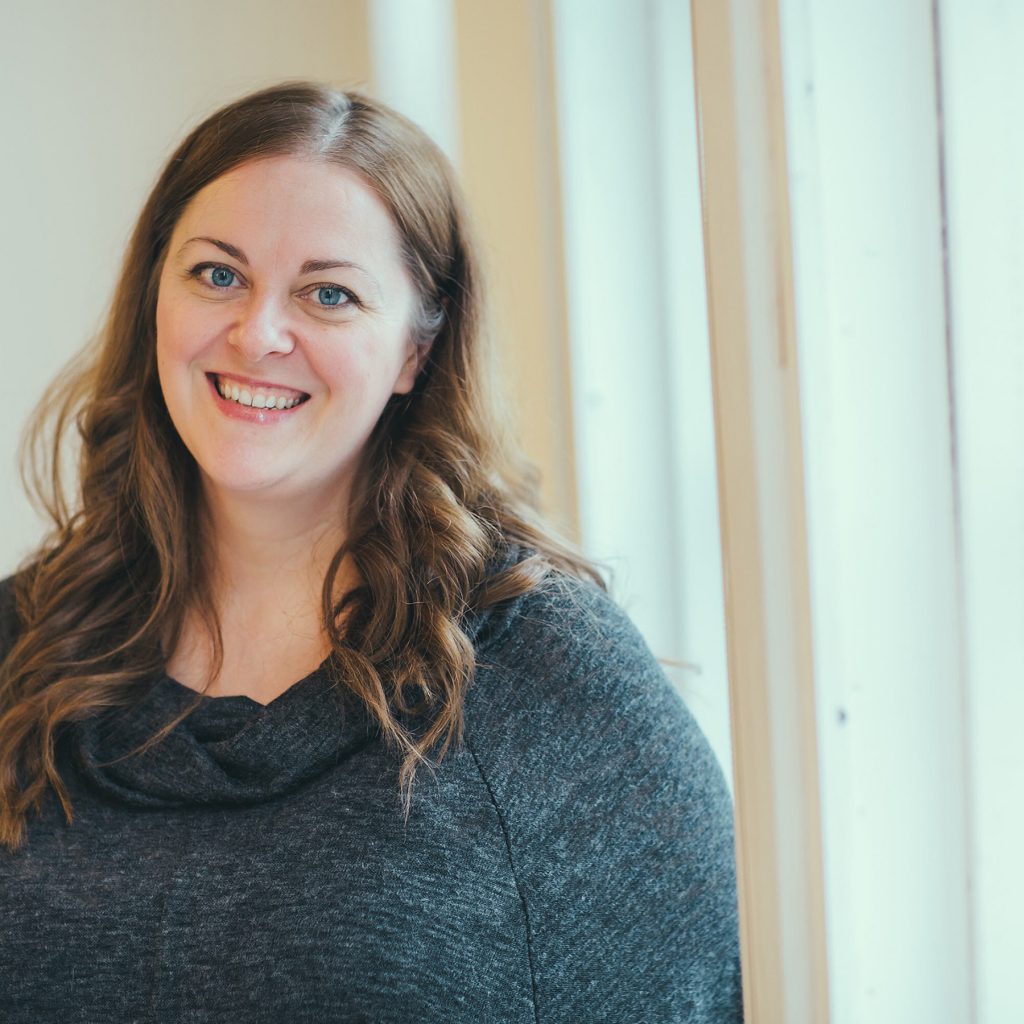 How would you describe your quilting style/aesthetic?
How would you describe your quilting style/aesthetic?
Heather: My aesthetic is minimal. I really prefer simple designs in limited color palettes, as I think they often produce the most striking graphic designs that I personally am drawn to. I find myself becoming more interested in minimalism in all areas of my life as the years go by; I don’t know if it’s because I’m getting older, and I simply want less things, or that our lives are so busy these days, but I find solace in simple things and designs.
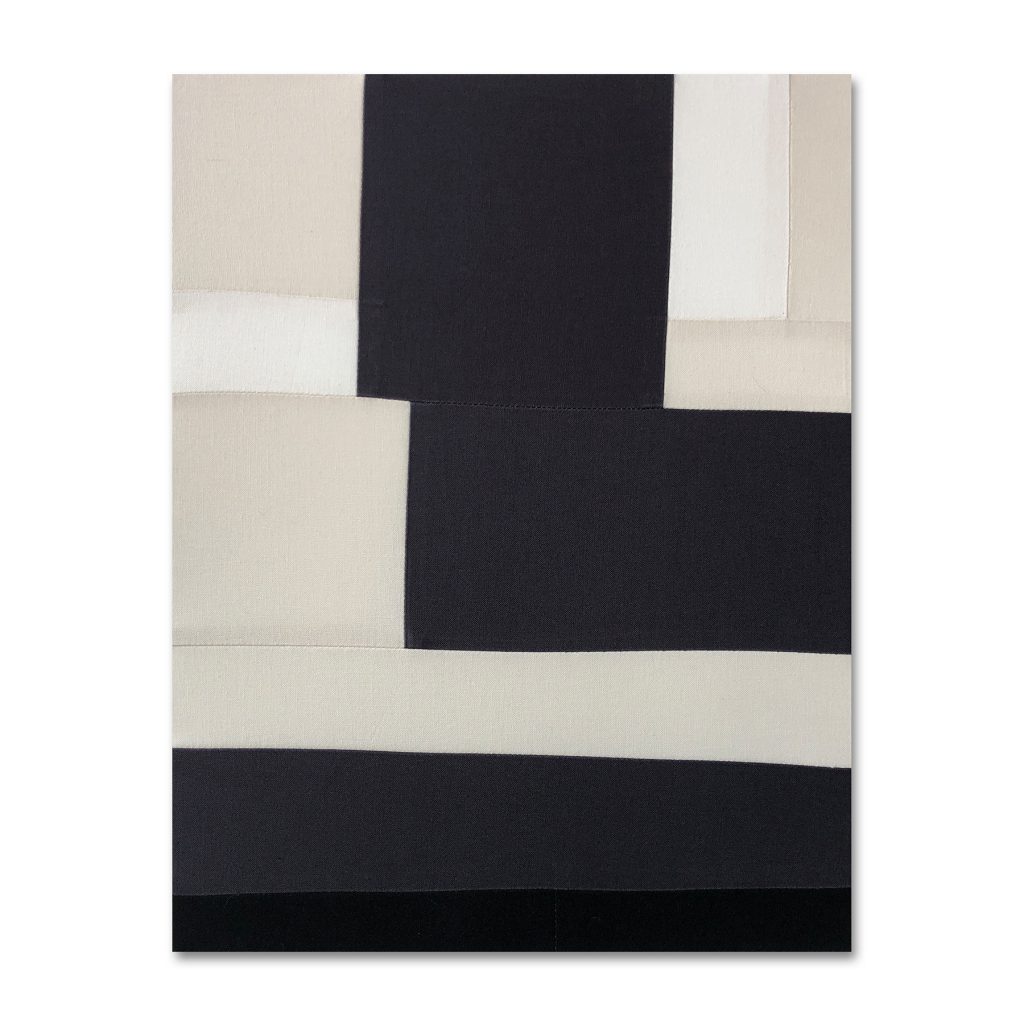
In the Dark. Image courtesy of Heather Jones.
How would you describe the creative environment in your home as a child?
Heather: My mom was really creative, and I owe a lot of my creativity to her. She majored in art education in college and took pottery classes when I was a child. I remember wanting to make beautiful ceramic pieces like her, and when she signed me up for classes when I was about nine I was so frustrated because mine looked nothing like hers. Patience is not a virtue that I come by naturally.
While my dad was not very creative himself, he was very supportive of my desire to make art, and would take me shopping to buy art supplies whenever I needed them. He also had a number of my large pastel drawings professionally framed when I was a teenager, and I remember being astounded that he paid so much to have that done!
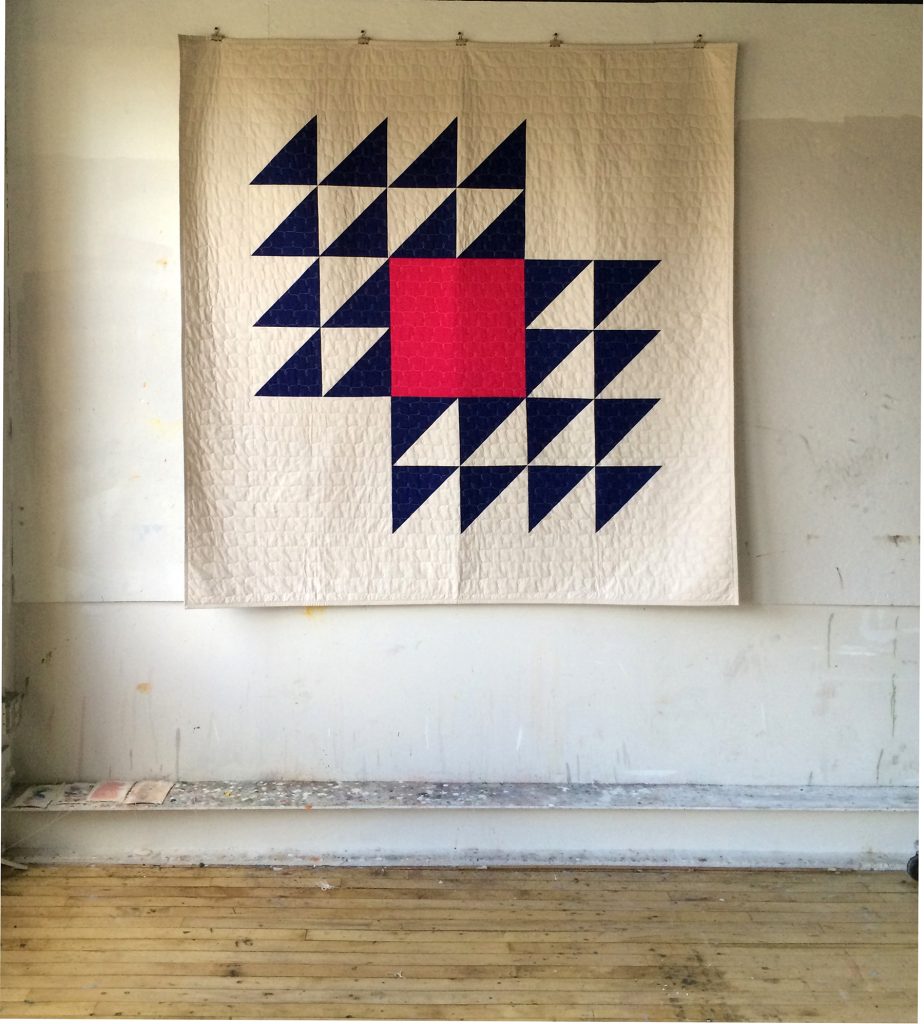
Fly Away. Image courtesy of Heather Jones.
What artists and makers do you most admire or have an influence on your work?
Heather: I’m incredibly inspired by the quilters of Gee’s Bend. I saw their work for the first time in person in 2002 when their first exhibition came to Cleveland Museum of Art, and I always get excited whenever I get the opportunity to see it, especially in person. I’m also a huge fan of Denyse Schmidt, and I feel like I owe Denyse and the Gee’s Bend quilters for so much, as their work was so fresh and exciting to me, and really propelled me to finally start quilting myself, as I had been rather intimidated by the craft for a long time. My great-great aunt Ollie is also a huge influence on my work, and I really feel like I owe my love of quilting to her, as she was the only person in my family that quilted (that I know of), and made me a quilt when I was born and she was in her 80s.
I am also greatly influenced by Josef Albers and his work with color, Anni Albers and her incredible textile designs, Sean Scully and his use of stripes, and the lush, free color use of Ellsworth Kelly, Mark Rothko, Helen Frankenthaler and Joan Mitchell.
My biggest influence is my husband, Jeffrey Cortland Jones. We met in graduate school at the University of Cincinnati and have been together for nineteen years. He is a painter and Professor of Art at the University of Dayton, and his work has certainly shaped my studio practice. He creates beautiful minimal, abstract paintings and has always encouraged my studio practice. He’s also a great person to bounce ideas off of, and I think we make a pretty good team.
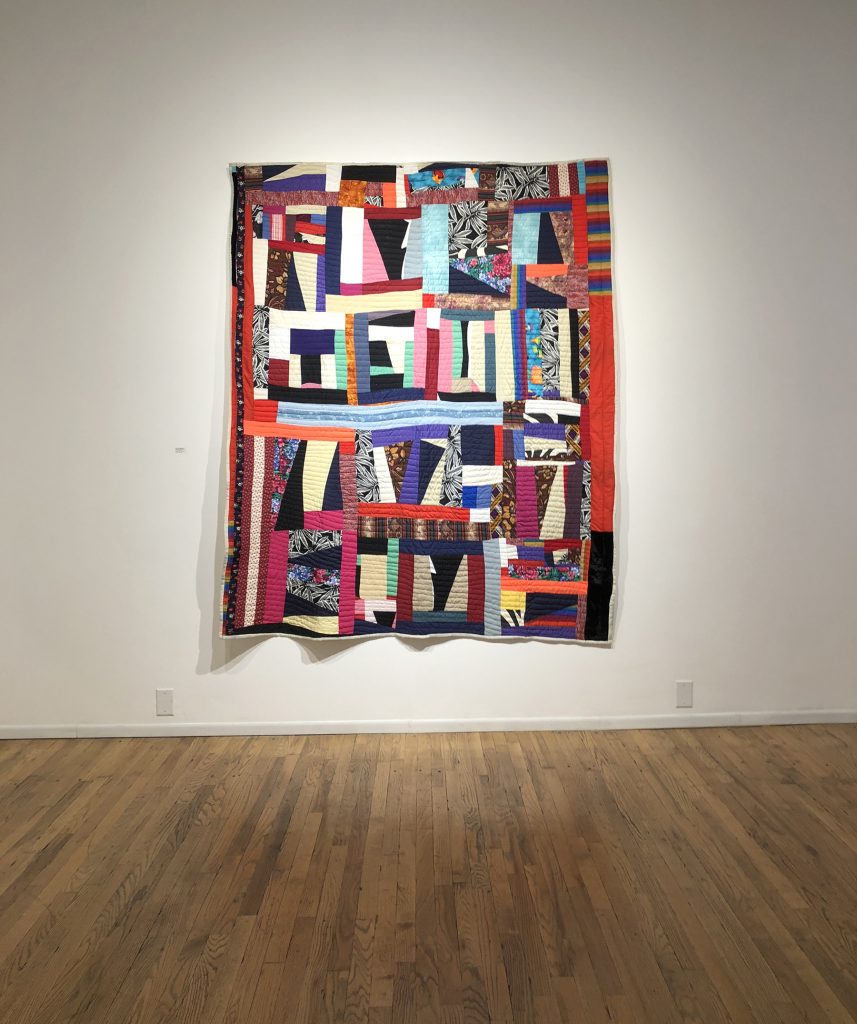
Heather’s work is deeply influenced by the quilters of Gee’s Bend. Pictured here, a strip quilt made by Mary Lee Bendolph (2009), on display at the Carl Solway Gallery in 2018. Image courtesy of Heather Jones.
Do you consider yourself a “quilter”, an artist, or some combination of both?
Heather: I’d say some sort of combination of both. I feel like I have two distinct studio practices, although there are certainly times where they overlap or intersect. Parts of their processes are similar but their outcomes are quite different.
I make my quilts to be used; they are completely functional. My quilts are inspired by traditional quilting patterns and my everyday world around me, and I really enjoy the process of creating a design and figuring out how to construct it in a quilt.
My other practice involves my “paintings,” which I refer to them as, even though the only paint that is used in their construction is on the wooden support; they are covered with pieced and stretched fabric. This body of work evolved after I was finished with my book projects and manuscript; I wanted to return to painting, but I wanted to make paintings like I made quilts, that is with geometric shapes and areas of color, not like the representational work that I had painted in the past. When I used to paint regularly in the past, I focused primarily on landscapes, still lifes, florals, some portraiture; but, I wasn’t interested in working like that when I returned to painting a few years ago. I tried to recreate some of my quilt designs with all types of media, including oil paint, gouache, and acrylic. But, no matter what I tried, I didn’t enjoy the process or the result. My husband, who is a painter and professor of art, encouraged me to use fabric as a medium to create paintings with, and I have to confess that I wasn’t completely sold on that idea for a while. But once I tried it, I knew that was exactly what I needed to do.
I still paint, with actual paint, occasionally too, and I would like to make time to do more of that next year. I have been experimenting with color washes of super thin acrylic paint, and I’d like to explore some of the same compositions but with oil paint and oil sticks on canvas.
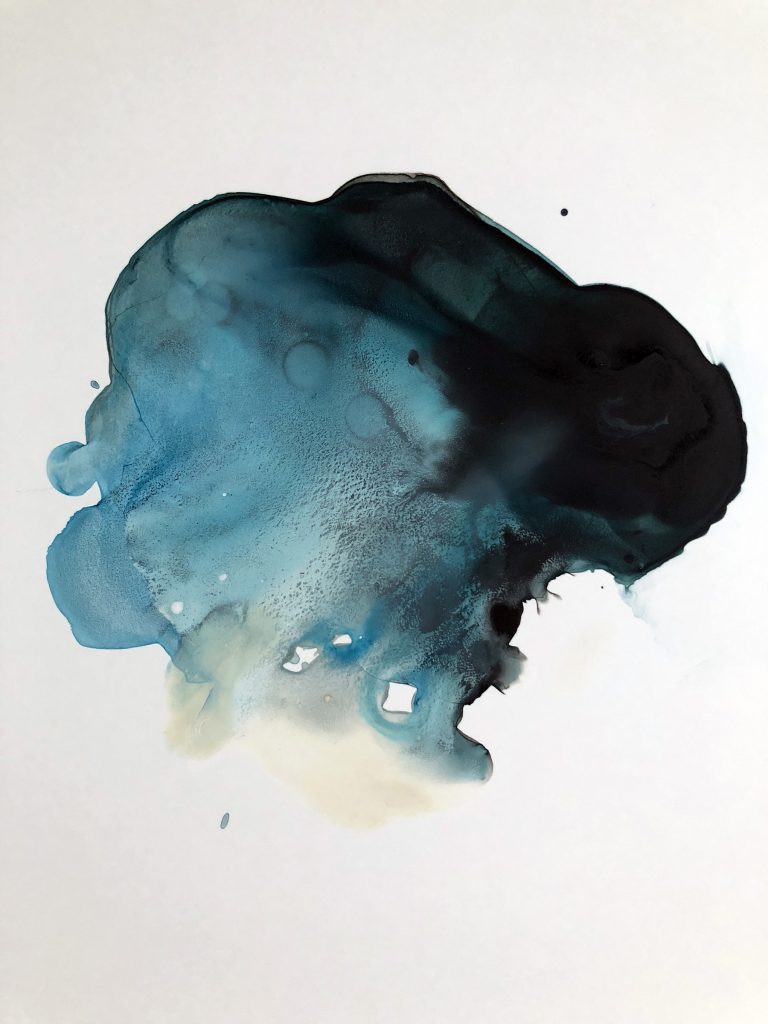
One of Heather’s wash paintings. Image courtesy of Heather Jones.
How would you define “making with intention”?
Heather: To me, making with intention is being thoughtful in your design, in how you choose your source of materials, and in how you want your work to be received.
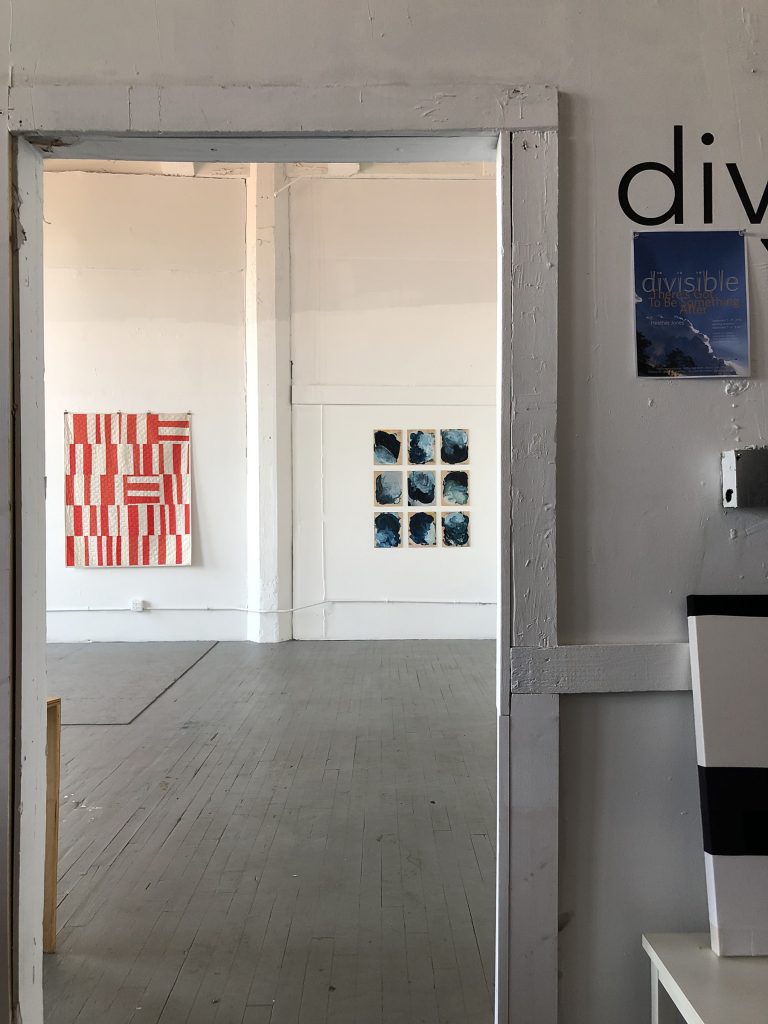
Heather’s work (quilt and painting) on display at Divisible Gallery in Dayton, Ohio. Image courtesy of Heather Jones.
Do you think that having a craft makes us more compassionate? If so, then how?
Heather: I do think having a craft makes us more compassionate. I feel like for those of us who use their hands to make things, we are connected to makers and craftsmen and women before us through our lineage, and by how these crafts are translated through generations. Maybe that sounds a bit lofty, but I think it’s true. Of course, that’s not to say that everyone who has a craft is more compassionate as those who don’t, but I like to think as a whole it does.
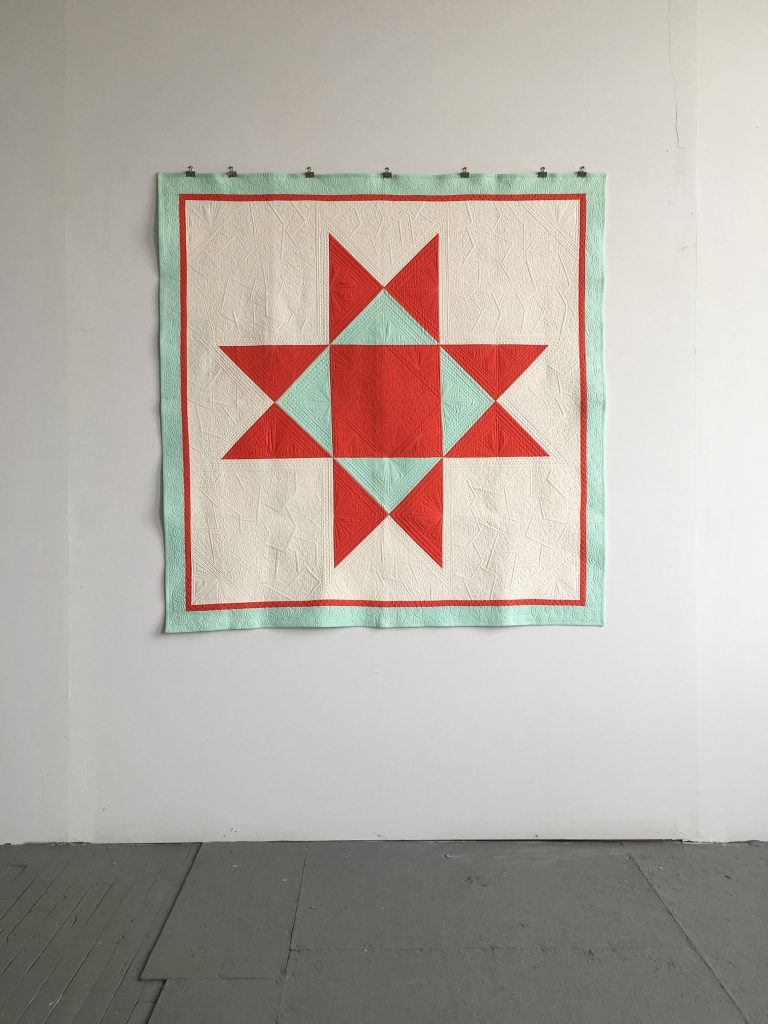
Ohio Supernova. Image courtesy of Heather Jones.
How does creating feed your soul/spiritual purpose?
Heather: I have always been a maker. I remember making a clay pot out of mud in my backyard and baking it in the sun, then painting it with watercolors. My dad still has it to this day, even though it’s probably at least 35 years old now. I’ve always made things with my hands and can’t imagine not doing that in some form or another. For a few years after college, I didn’t create or make things as a regular practice. So, when I was able to go back to it after my children were born, it is something that I don’t take for granted. I can’t imagine not creating things; it’s really a huge part of who I am.
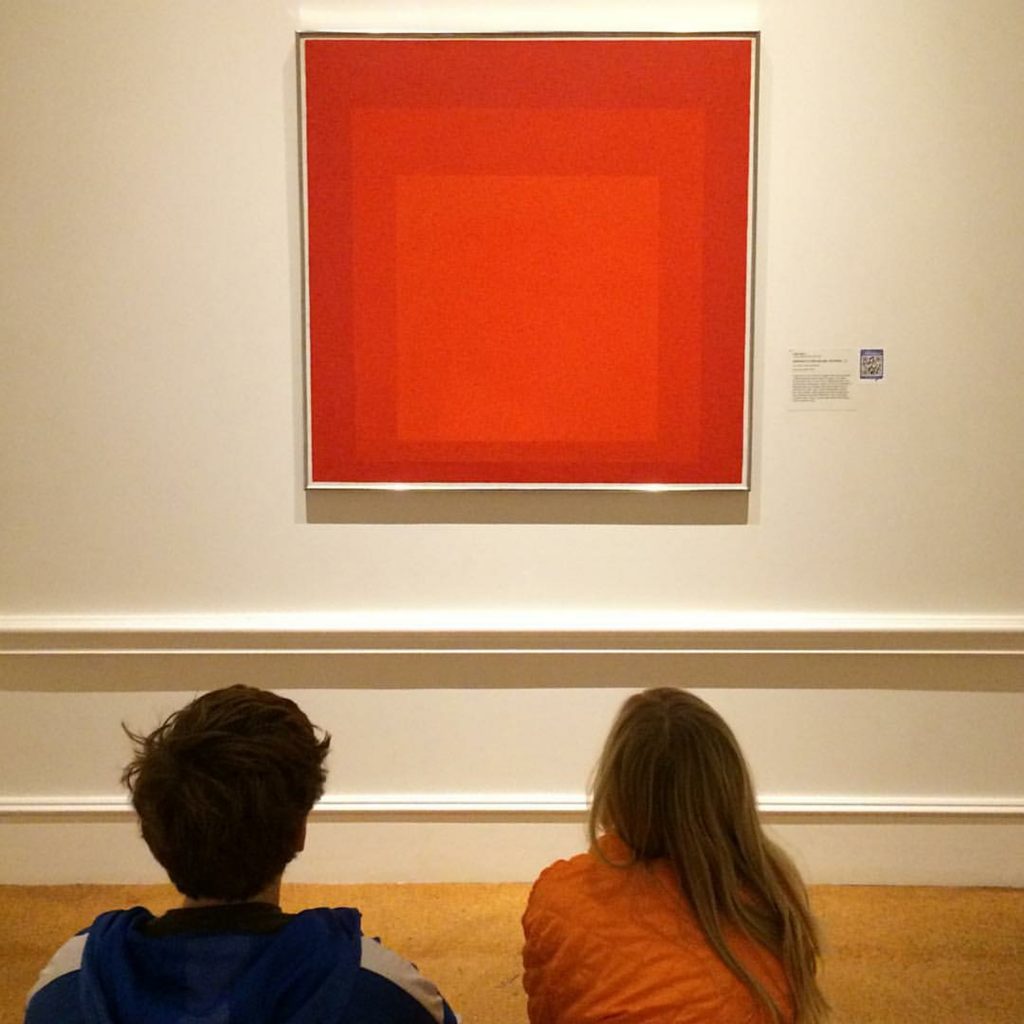
Heathers children Aidan and Olivia admiring an Albers painting, one of Heather’s influences in her art. Image courtesy of Heather Jones.
Are there any rituals that you perform to prepare/ground yourself in your work?
Heather: I try to be self-aware and in the moment when I’m working. I wrote a bit about my practice in my book, Quilt Local: Finding Inspiration in the Everyday (Abrams, 2015), as I find it to be invaluable in my work to be centered and in the moment. I have two children who are now 10 and 12, so it’s not as if my life is without chaos. Quite often, it’s the opposite, as I am first and foremost their mom, who drives them to and from school, who gets them to their afterschool activities, and who does most of the cooking, laundry, etc. However, I wouldn’t trade it for anything. I think my experience as a working mother only makes me savor that time in the studio even more. It has also made me pretty good at getting a relatively large amount of work done in a short amount of time.
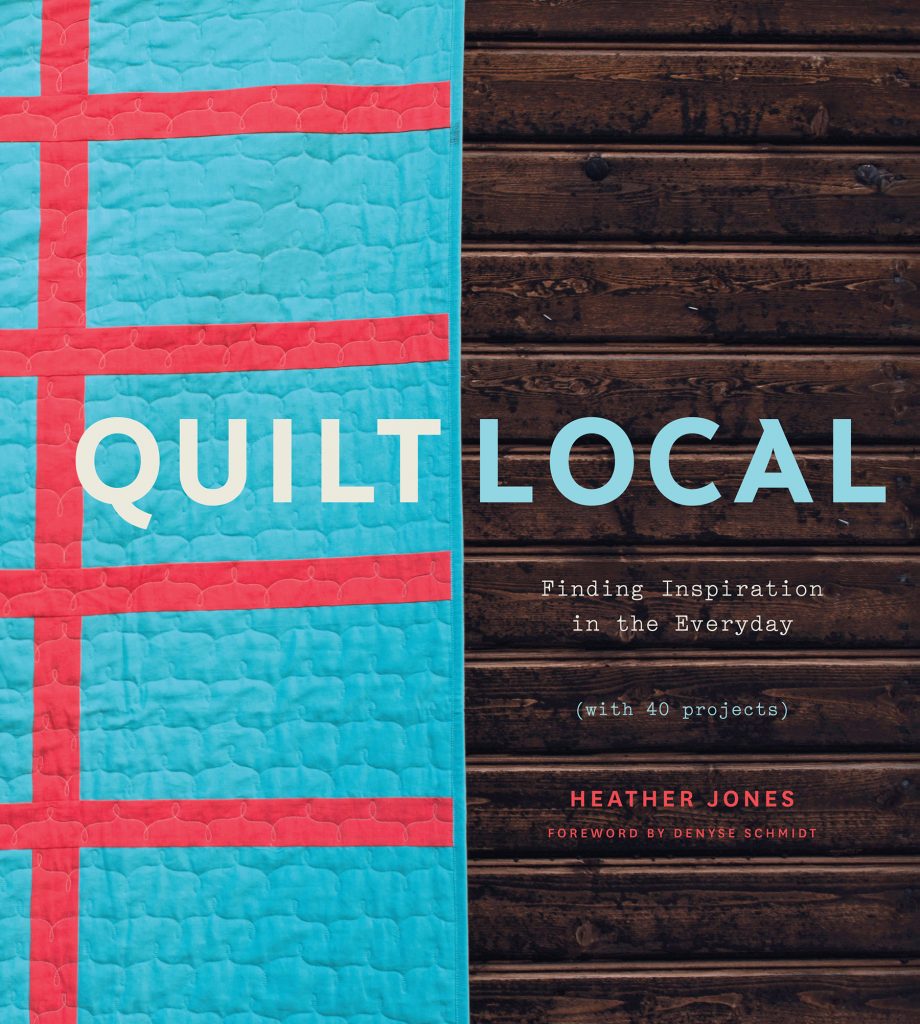
Heather’s first book Quilt Local: Finding Inspiration in the Everyday.
What is the support system you have in place for creating your work?
Heather: My husband is incredibly supportive of me and my creative path. I think part of the reason why, is that he is a creative himself, being a painter and professor of art. He likes to joke that he is my unpaid studio assistant. In a way, he is completely correct. But, I like to think of him as more of my partner in crime. He is great to bounce ideas off of, he’s encouraging and my biggest cheerleader, an he’s willing to step in with the household duties when I have to travel to teach. I could go on and on. I honestly couldn’t do all of this without him.
We have two children who are now 12 and 10, and it’s really important to me to show them that they can follow a creative path if they choose. I want them to learn that they can do anything that they want, as long as they are willing to work hard.
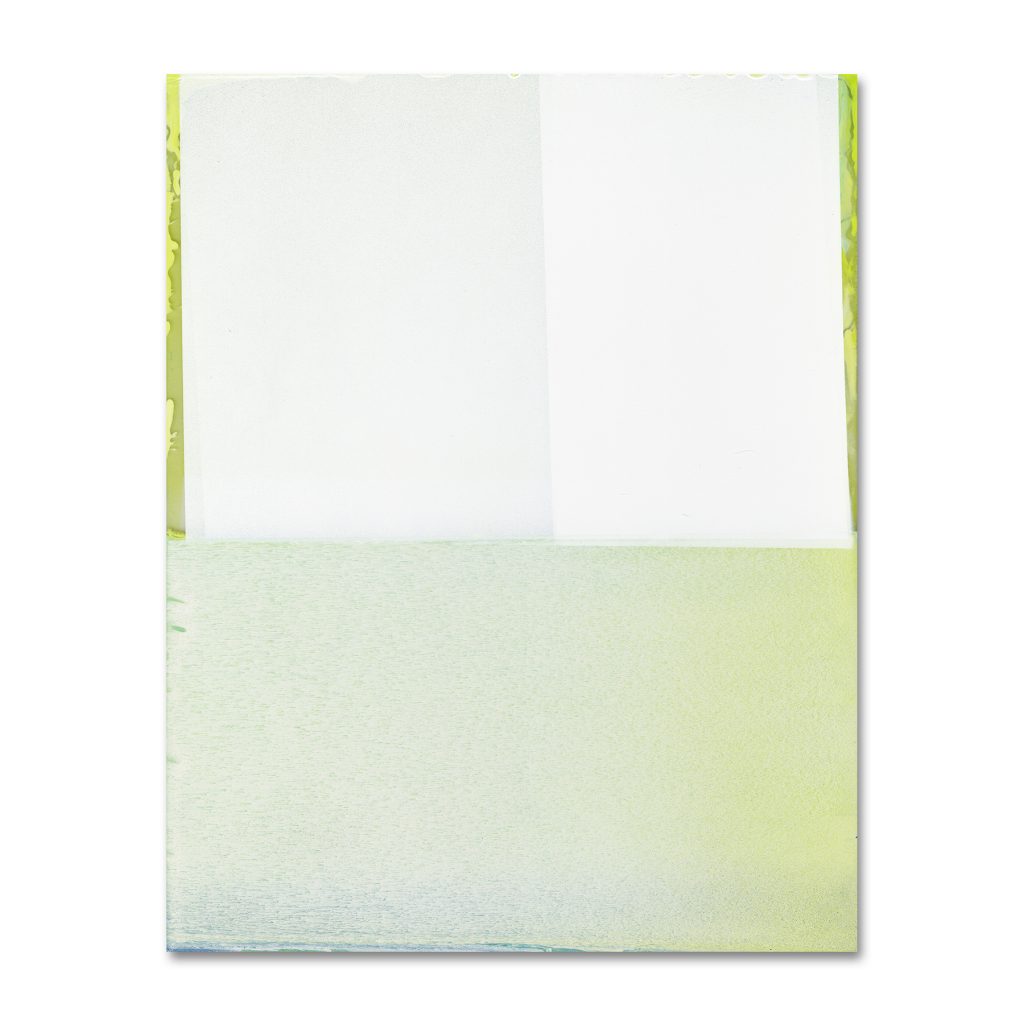
A painting by Heather’s husband, artist Jeffrey Cortland Jones titled Sweetness (I Was Only Joking). Image courtesy of Heather Jones.
How do you deal with comparison to / envy of others? Can you describe a time when you used comparison/envy/admiration to push yourself in your own work and self-discovery?
Heather: I think it’s totally natural to compare yourself to others, but I prefer to spend my time focusing on my work and my studio practice, and making it the best that I can. I don’t read craft blogs regularly; it’s not that I’m not interested, it’s just that I don’t want to be accidentally influenced by something that I see, particularly when it comes to my quilts.
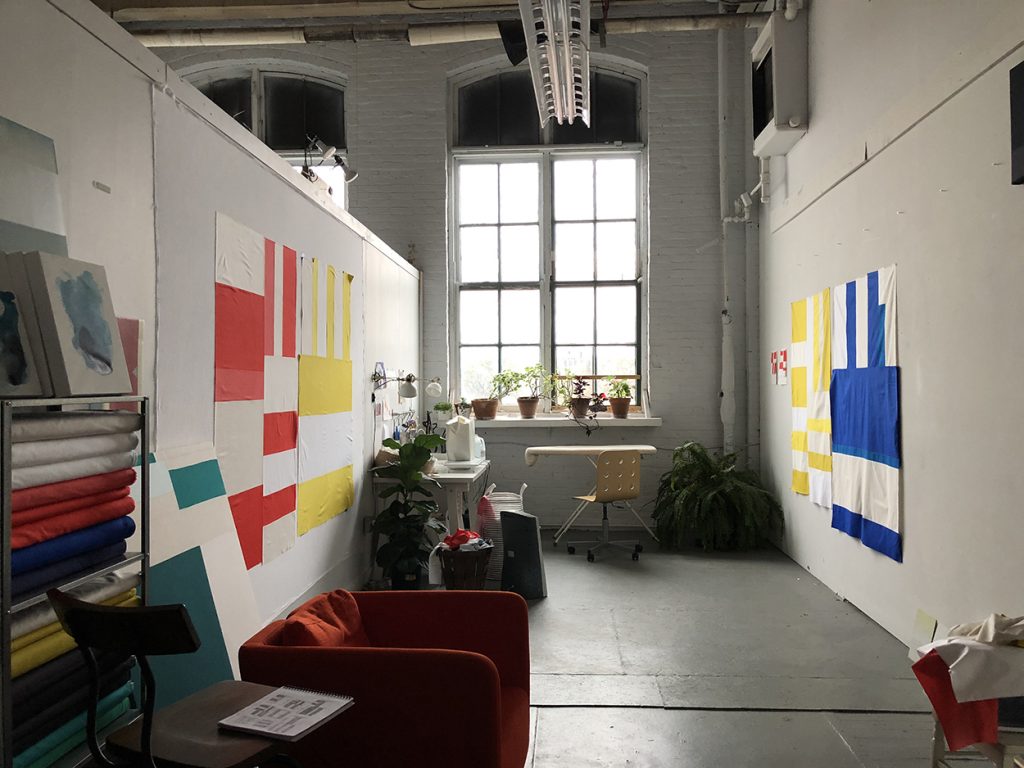
Heather’s studio with a commission for the Port Authority in progress on her design wall. Image courtesy of Heather Jones.
What was the most challenging thing you ever made?
Heather: The most challenging thing that I’ve made so far is a new piece that I finished last month titled You Don’t Get It, Do You? It’s 80” by 120” and is comprised of a sewn panel background with two stretched fabric paintings floating over it. The whole thing was a bit of an experiment, and I’m really happy with how it turned out. I wanted to combine the tight, finished look of my stretched fabric paintings with something looser, like a quilt top, but not one that has been quilted, if that makes sense. The result is sort of this large scale, flag-like background that has body and a looseness to it, contrasted with two clean, crisp and tight panels. It is hung with grommets. I like that the hanging device is shown and becomes part of the composition itself. But, it was really scary and more than a bit nerve wracking to cut holes for the grommets into such a large piece once it was finished, because if I were to mess up, there was really no way to fix it.
The work is going to be on display at the Aqua Art Fair in Miami, FL in December 2018 with Imlay Gallery.
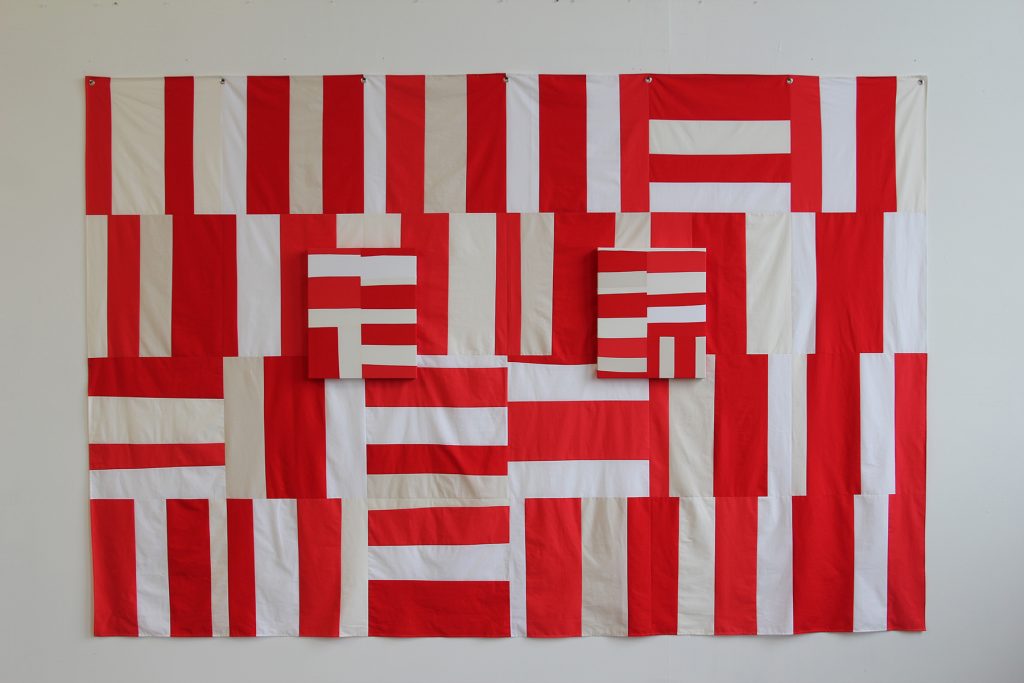
You Don’t Get It, Do You? Image courtesy of Heather Jones.
What does it mean to you to work in a traditionally domestic medium that historically has been regarded as predominately female (aka “women’s work”)?
Heather: I love the connotations that my work has with a traditionally domestic medium, and I love pushing the boundaries with my fabric paintings. They relate to the craft of quiltmaking and are influenced by it immensely, as well as are constructed using some of the same techniques. They are certainly influenced aesthetically by many heroic painters of Abstractions, such as Ellsworth Kelly, Mark Rothko, Josef Albers, and Sean Scully. Yet, I choose to make them out of fabric, where those artists work(ed) primarily with paint. My choice of using fabric to create paintings is intentional, and I could certainly get a similar effect with paint, but I choose not to. By working with fabric, I am connected to members of my family, my lineage of women from Appalachia, and to thousands of American women who made, and continue to make, quilts as a way to express themselves creatively.
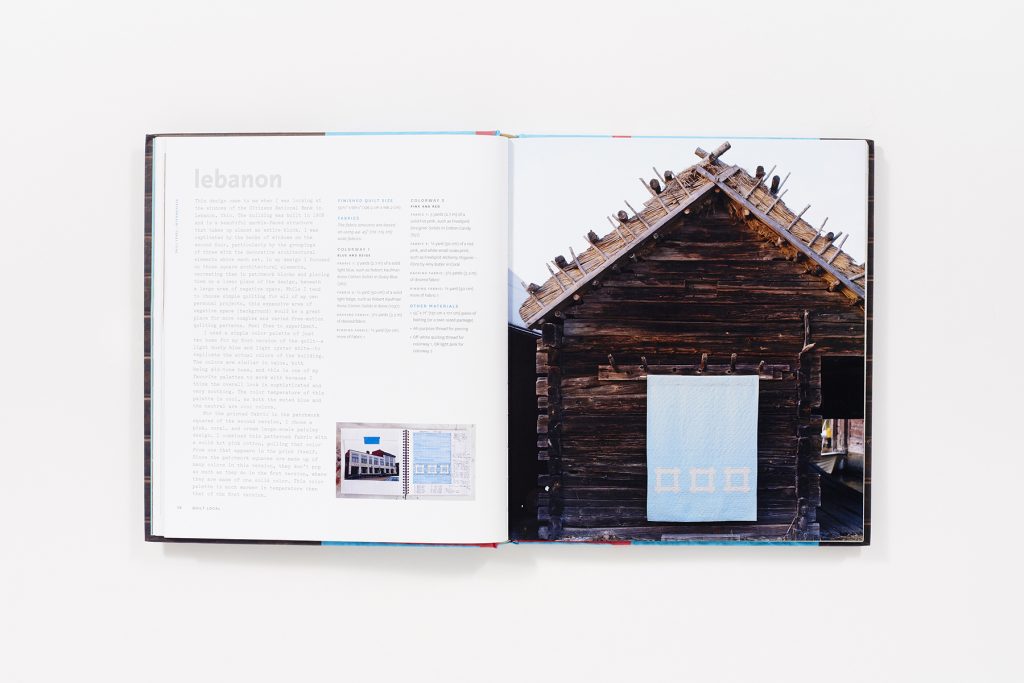
An image from Heather’s book, Quilt Local: Finding Inspiration in the Everyday. Image courtesy of Heather Jones.
How do you see your current work in the context of quilting history?
Heather: I feel that many of my quilting designs are an homage to those who came before me; be it my work that is inspired by traditional quilt patterns, or unique designs that are based on everyday inspiration. For hundreds of years, mostly women have been inspired by things in their everyday lives and used those things as starting points for quilt patterns: think log cabin, churn dash, flying geese, etc. I am honored to carry on that tradition in my work.
At the same time, I also think that my fabric paintings are pushing the boundaries of what quilting is, and how traditional quilting techniques can be used in different ways. I am interested in adding to the dialogue of what quilting is and also what painting is.
Thank you, Heather! Your avant garde approach to quilting and painting is so exciting and we can’t wait to see where you take it next! For more about Heather visit her website. Also, connect with her on Instagram, or Pinterest. Her work is represented by The George Gallery, Charlestown, SC , Imlay Gallery, Montclair, NJ, and she has work available through the Marta Hewett Gallery in Cincinnati, Ohio.
Want to participate in the Creativity Project? You can do that! Click here to take the survey!
The Creativity Project can be found on Instagram, Pinterest, Twitter or Bloglovin’. Or check back here every Friday of 2018!
One Comment
Comments are closed.

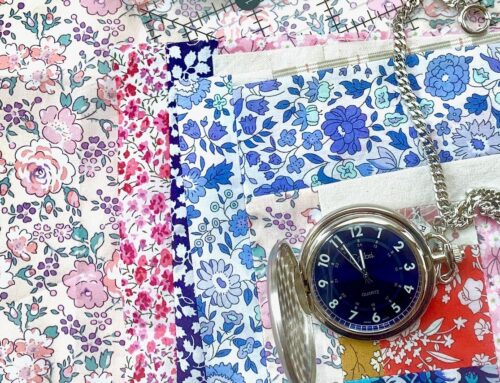
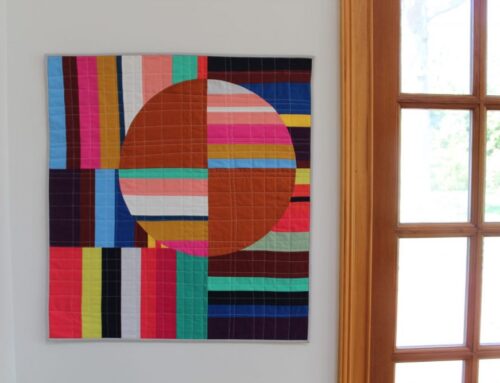
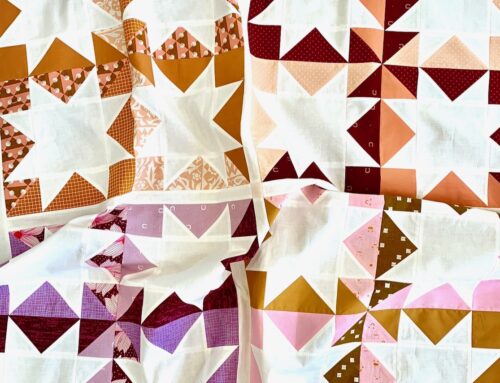

[…] Zak Foster, Karen Duling, Jenny Haynes, Carolina Oneto, Kim Eichler-Messmer, Suzy Williams, Heather Jones, Sam Hunter, and of course all of you who participated in the survey. Thank you for taking the time […]